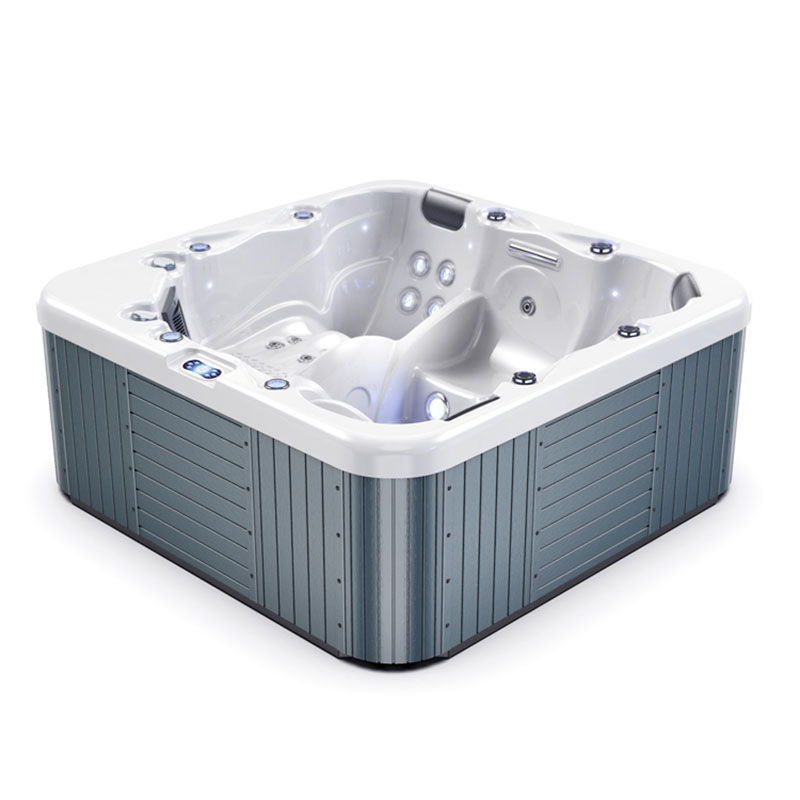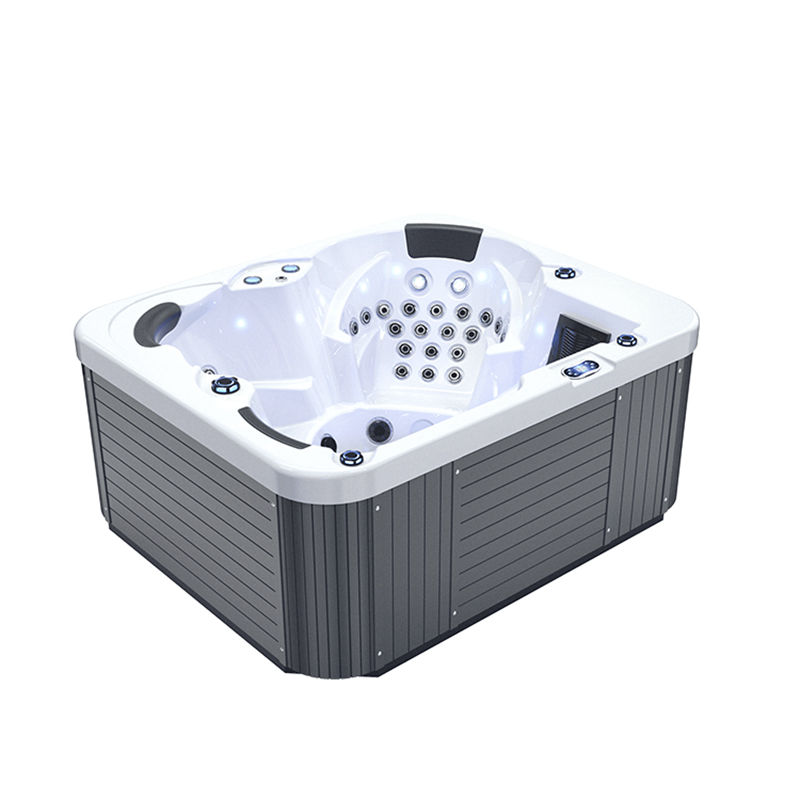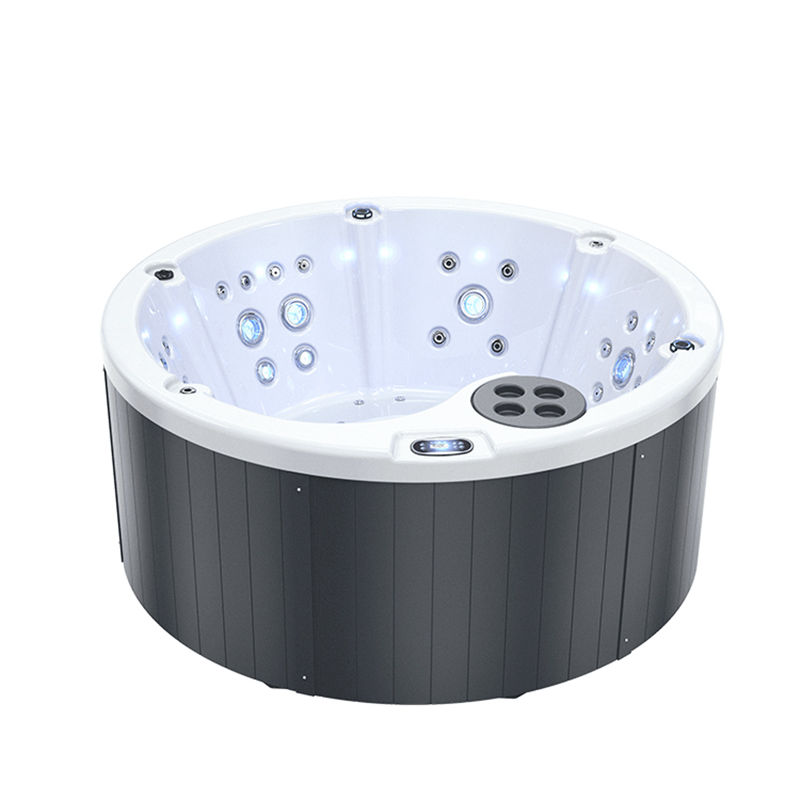An outdoor hot bathtub is a very popular leisure equipment that not only provides warmth and comfort to users in cold seasons, but also brings physical and mental relaxation through its massage function. However, many people may not know the daily maintenance of an outdoor hot bathtub, especially the temperature setting when not in use. Inappropriate temperature settings may lead to energy waste and even damage the life of the bathtub equipment. Therefore, how hot should an outdoor hot bathtub be when not in use has become a key issue worth discussing.
This article will deeply analyze the optimal temperature setting of an outdoor hot bathtub when not in use from the perspective of energy saving, equipment protection, comfort and long-term use cost.
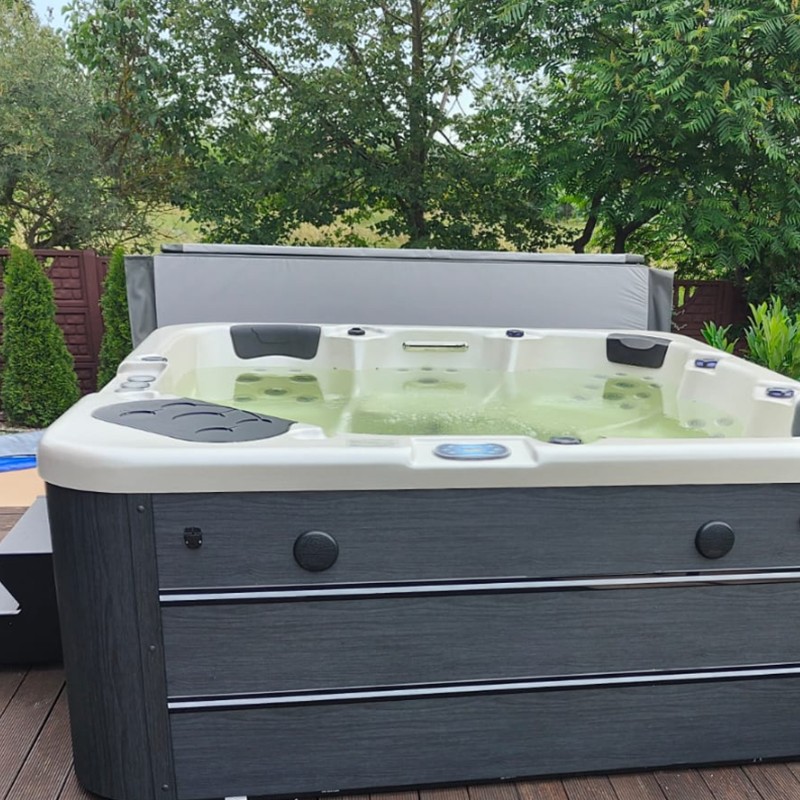
How does an outdoor hot bathtub work?
To discuss the temperature setting of an outdoor hot bathtub when not in use, you first need to understand its working principle. An outdoor hot bathtub maintains water temperature and water quality through the operation of an electric heater, pump, nozzle and water filtration system. When the heater is turned on, electrical energy is converted into heat energy to heat the water in the bathtub; while the pump ensures that the water flow is evenly distributed to prevent uneven water temperature or local overheating.
Typically, outdoor hot tubs operate at temperatures between 35°C and 40°C. To ensure that the tub is always comfortable and usable, many people keep it at a higher temperature. However, when the tub is not in use for a long time, it becomes a question of whether it should be kept at such a high temperature.
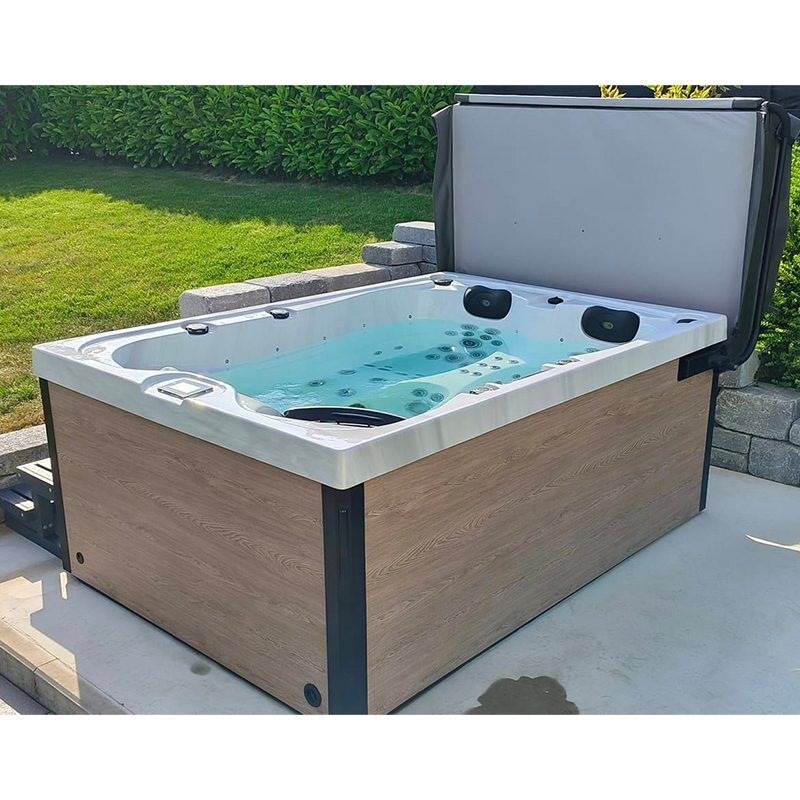
Why should the water still be kept at a certain temperature when not in use?
Although it may seem unnecessary to keep the outdoor hot tub hot when it is not in use for a long time, in fact, completely shutting off the hot tub's heating system may cause unnecessary problems.
Preventing the water from freezing:
In cold climates, especially in winter, the water in the outdoor hot tub has the potential to freeze due to low temperatures. Freezing water can cause damage to the pipes and pump system, especially when the outdoor temperature is very low, frozen water may cause the pipes inside the system to rupture. If the water tank is not completely drained during the winter and the water temperature is not kept within a certain range, the cost of repairing the outdoor hot tub may rise significantly.
Maintaining water quality:
The water quality of the outdoor hot tub needs to be maintained regularly to prevent the water from deteriorating or breeding bacteria. If the temperature of the tub is too low, it may cause the chemicals in the water to become ineffective, increasing the risk of bacterial growth. In addition, lower water temperatures can affect the water circulation and filtration systems in the hot bathtub, causing water quality to deteriorate. Therefore, maintaining a certain water temperature helps the water circulate and the effectiveness of chemicals.
Reduce the energy consumption required to start heating:
Completely shutting down the outdoor hot bathtub or turning it to a very low temperature means that a lot of energy must be consumed to reheat the water to a suitable temperature when it is needed again. In contrast, maintaining a relatively constant low temperature (such as around 30°C) can reduce the energy consumption of the outdoor hot bathtub when reheating.
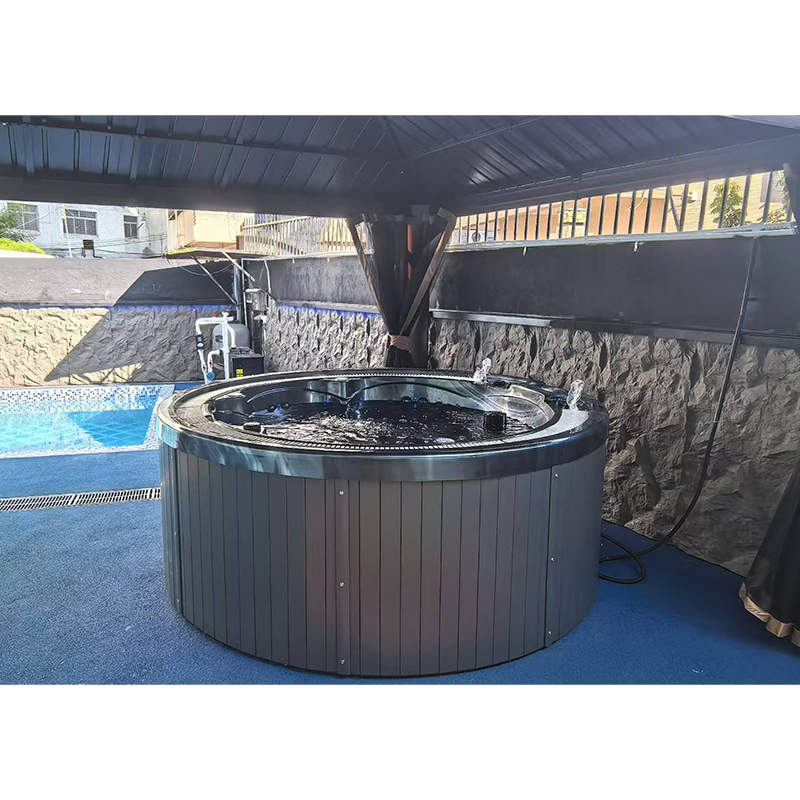
What are the considerations for the optimal temperature setting of the hot bathtub?
Since it is not recommended to completely shut down the outdoor hot bathtub, what temperature should be maintained when not in use? The following factors can help determine the appropriate temperature setting:
Frequency of use:
If the outdoor hot bathtub is used frequently, such as once or twice a week, it is reasonable to maintain a higher temperature (about 32°C to 35°C). This can reduce the time and energy required for reheating. On the contrary, if the hot bathtub is used less frequently, such as only once a month, the temperature can be appropriately lowered (about 26°C to 30°C) to reduce energy consumption.
Ambient temperature:
Ambient temperature is one of the important factors that determine the temperature setting of the hot bathtub. If the ambient temperature of the outdoor hot bathtub is high, such as in summer or warm climates, the water temperature can be appropriately lowered (28°C to 30°C). In the cold winter, in order to prevent the water from freezing, it is generally recommended to keep the water temperature between 30°C and 35°C.
Energy saving needs:
The temperature setting of the outdoor hot bathtub when not in use is closely related to energy consumption. The higher the temperature, the more energy is consumed to maintain a constant temperature. Therefore, for those who want to save energy, it is recommended to lower the water temperature to a range of 26°C to 30°C when not in use. This temperature can both maintain water quality and reduce energy consumption.
Equipment protection:
In addition to water quality and energy consumption, maintaining a certain water temperature is also crucial for the equipment protection of the outdoor hot bathtub. Proper water temperature can prevent damage to pipes, pumps, and filtration systems due to overcooling or prolonged low-temperature operation. Low water temperatures may cause reduced water flow in the system, which may affect the normal operation of the water pump.
What are the strategies for energy saving and water temperature management of outdoor hot bathtubs?
In order to minimize energy consumption when not in use, while ensuring the normal operation of the equipment and the maintenance of water quality, the following strategies can help to properly manage the temperature of outdoor hot bathtubs.
Use timers:
Timers can help automatically adjust the heating system of outdoor hot bathtubs to ensure that it is maintained at a lower temperature when not in use and automatically heats up before it is needed. For example, users can set the bathtub to remain at 28°C when not in use and automatically heat it up to the desired temperature one or two hours before use.
Regularly check water quality and chemical balance:
Regularly checking the water quality of outdoor hot bathtubs, including pH, alkalinity, and chlorine content, can ensure that the water quality remains good even when not in use. Even if the water temperature is low, regular water quality maintenance can prevent bacterial growth and water deterioration.
Use hot tub lids:
Outdoor hot tub lids play a key role in maintaining water temperature and reducing heat loss. A good outdoor hot tub lid can effectively reduce heat loss and reduce the workload of the heating system, thereby achieving energy saving. Keeping the lid sealed when not in use is one of the key measures to reduce energy consumption.
Adjust the temperature setting of the heater:
Many modern outdoor hot tubs have multi-speed temperature adjustment functions, and users can adjust the temperature setting of the heater according to actual conditions. For example, in winter, it can be kept at a higher temperature, while in summer, the water temperature can be lowered to a moderate range.
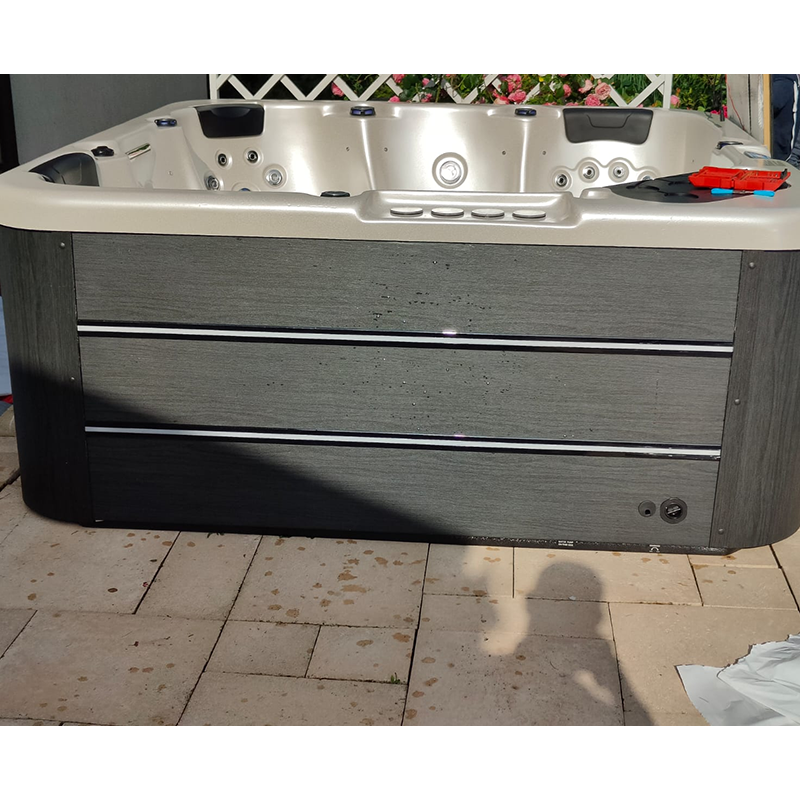
How hot should the outdoor hot tub be kept in different seasons?
The temperature management of the outdoor hot tub is closely related to the season. The ambient temperature changes significantly in different seasons, so appropriately adjusting the temperature of the hot tub in different seasons is an important strategy to keep the equipment in good condition and save energy.
Winter:
In winter, the temperature is low, especially in cold areas. It is recommended to keep the temperature of the outdoor hot tub between 30°C and 35°C. This can prevent the water from freezing and reduce the energy consumption of reheating. If the temperature in your area is extremely low in winter, it is recommended to keep the water temperature slightly higher to ensure the safe operation of the outdoor hot bathtub.
Summer:
The ambient temperature in summer is usually higher, and users can set the temperature of the outdoor hot bathtub lower, usually 28°C to 30°C. This can reduce the burden on the heating system while also ensuring good water quality.
Spring and Autumn:
In spring and autumn, the temperature is relatively mild, and users can set the water temperature to around 30°C according to specific climatic conditions, which can save energy and maintain stable operation of the equipment.


